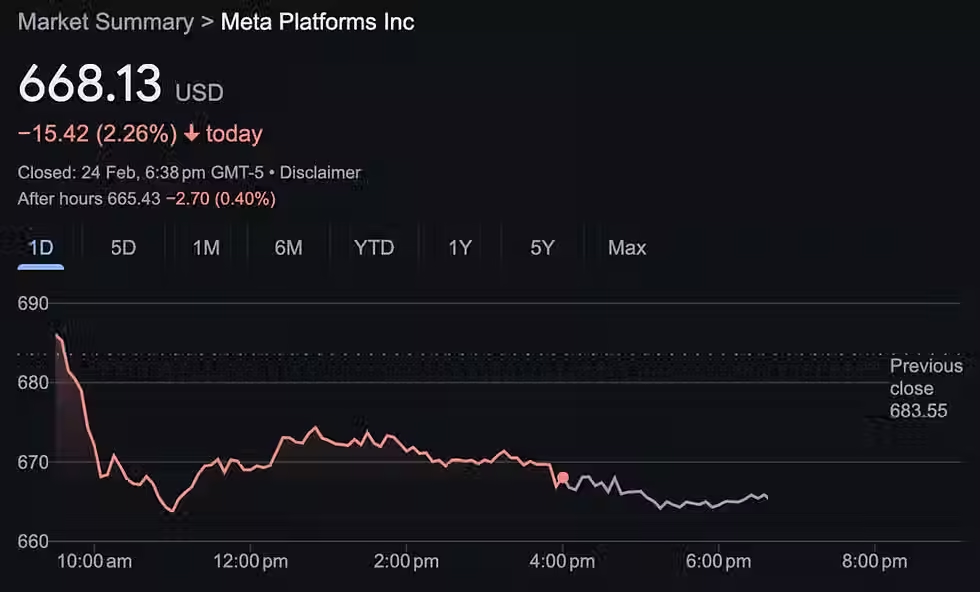Top 6 Things to Consider Before Buying Stocks
- Buffett Online School

- Sep 21, 2023
- 5 min read

If you wait for the market to hit its recession period before buying stocks, you might have to wait for a very long time. Knowing how to pick stocks is essential because it is difficult to predict when the market is at its lowest or highest.
We can't predict where it will be in the next six months, but it's likely higher in the next five years. If it’s hard to predict the market, you probably wonder what to do before buying stock.
With all this in mind, Chloe shares her TikTok video on how to pick good stocks to buy that can help you with decision-making.
At Buffett Online School, we also believe in investing in great companies you understand and utilizing Free Investing Resources to help you start your financial freedom and investment journey is one of the best ways to learn.
How to Pick Stocks: What to Consider Before Buying
Let’s walk through these guidelines for picking stocks before investing.
1. Operating Cash Flow (OCF)
Operating cash flow is the company's cash generated from its core business activities. It is a good measure of a company's financial health and ability to generate cash to pay its bills, invest in its business, and return money to shareholders.
Knowing the company's operating cash flow is essential when buying stocks. If a company has a positive operational cash flow, it is more likely to be financially stable and able to grow its business.
A company with a negative operating cash flow may struggle to make money and may not be a good investment.
2. Net Margin
Another item to check before picking stocks is net margin. Net profit margin measures a company's profit per dollar of revenue. You can calculate it by dividing the company's net income by its revenue. A high net profit margin means the company makes a profit per dollar.
The net profit margin is an indicator of a company's financial health. A high net profit margin means the company is excellently controlling costs and generating profits.
Using the net profit margin, you can differentiate the profitability of two or more companies. Companies with a higher net profit margin are generally more profitable than companies with a lower net profit margin.
3. Interest Coverage
When picking stocks, you should look for the company's interest coverage. It measures how easily a company can afford to pay its interest payments. You can calculate this by dividing the company's earnings before interest and taxes (EBIT) by its interest expense.
A higher interest coverage ratio means that the company is more likely to be able to afford its interest payments. A lower interest coverage ratio indicates the company is more likely to have trouble paying its interest payments.
If a company's interest coverage ratio is only 1.5 or lower, it may struggle to meet its interest payments. This is a sign that the company is taking on too much debt and may be unable to afford its financial obligations in the future.
4. Earnings Per Share
Earnings per share (EPS) measures how much money a company makes for each share of its stock.
The higher a company's EPS, the more profitable it is. You can use EPS to compare the profitability of different companies, and from that, you can decide whether to invest in a particular stock.
You can calculate the EPS by dividing a company's net income (profit) by the number of outstanding shares of stock. Net income is the company's total profit after paying all expenses. Outstanding shares are the total number of shares of stock that investors currently own.
EPS can help you to identify companies that are profitable and well-managed. However, it is essential to remember that EPS is just one metric, and you should not use it in isolation.
When making investment decisions, consider other factors such as OCF, net margin, interest coverage, technical analysis, and valuation. You can use websites like Jitta to help you analyze stocks.

5. Technical Analysis
Technical analysis is a way to predict future stock prices by looking at previous price movements. It uses statistical analysis and behavioral economics to help investors make better decisions.
At its core, technical analysis is about finding patterns in past price movements. If you can identify a pattern that has happened before, you can make an educated guess about what will happen in the future.
Some of the patterns that you should look for include:
Support and resistance levels
These are price levels with a lot of buying or selling pressure. If a stock price hits a support level, it will likely bounce back up. It is likely to fall back down if it hits a resistance level.
Trends
A trend is a general direction in which a stock price is moving. There are uptrends, downtrends, and sideways trends.
Patterns
Some stocks form patterns over time, such as triangles, head and shoulders, and double bottoms. You can use these patterns to predict future price movements.
Technical analysis is not a perfect science, but it can be helpful for investors. If you’re wondering, ‘What should I look at before buying a stock?’ then use it to help you make sound decisions.
6. Valuation
Stock valuation is the process of determining how much a stock is worth. There are two main types of stock valuation: absolute and relative.
Absolute valuation uses a company's fundamentals and financials to determine its intrinsic value.
Relative valuation compares a company's stock price to the stock prices of its peers and the market as a whole.
The most common way to value a stock is by calculating its price-to-earnings (P/E) ratio. The P/E ratio measures how much investors will pay for each dollar of a company's earnings.
If the P/E ratio is high, investors pay a lot for each dollar of earnings, which indicates that the stock is overvalued. A low P/E ratio suggests that the stock is undervalued.
The P/E ratio is not the only tool you can use to value stocks. Investors may also consider a company's growth prospects, financial strength, and competitive position.
Combining different valuation methods is the best way to value a stock. It will give you a complete picture of the company's value and help you figure out how to choose stocks. Partner it with reading investing books to complement your learning.
Join Our Free 2-Day BOS Value Investing MBA
At the Buffett Online School, we believe in learning the right investing mindset and system, cultivating emotional detachment, and growing our wealth safely and substantially in the long run.
Our next 2-day BOS MBA Value Investing Online Bootcamp is happening soon! We will teach you how to use Warren Buffett's proven investing method to maximize your portfolio.
Remember, you can cultivate the right investing mindset and unlock your potential to build wealth through intelligent investing. Together, we can create a network of educated investors who make informed decisions and contribute to their financial well-being!
In the meantime, feel free to check out some of our blog posts to continue learning. You can also join our BOS Telegram channel for more investing insights!






Comments